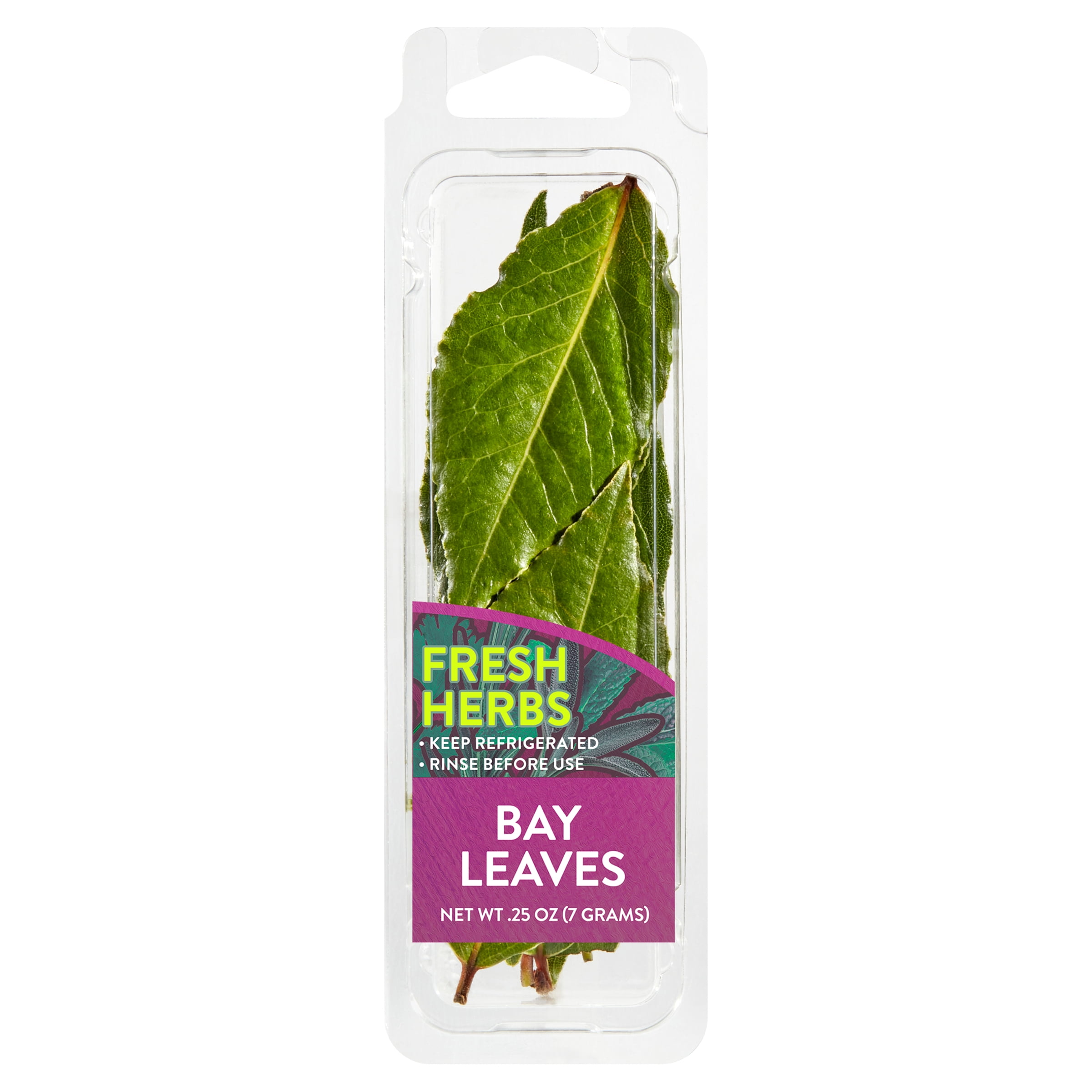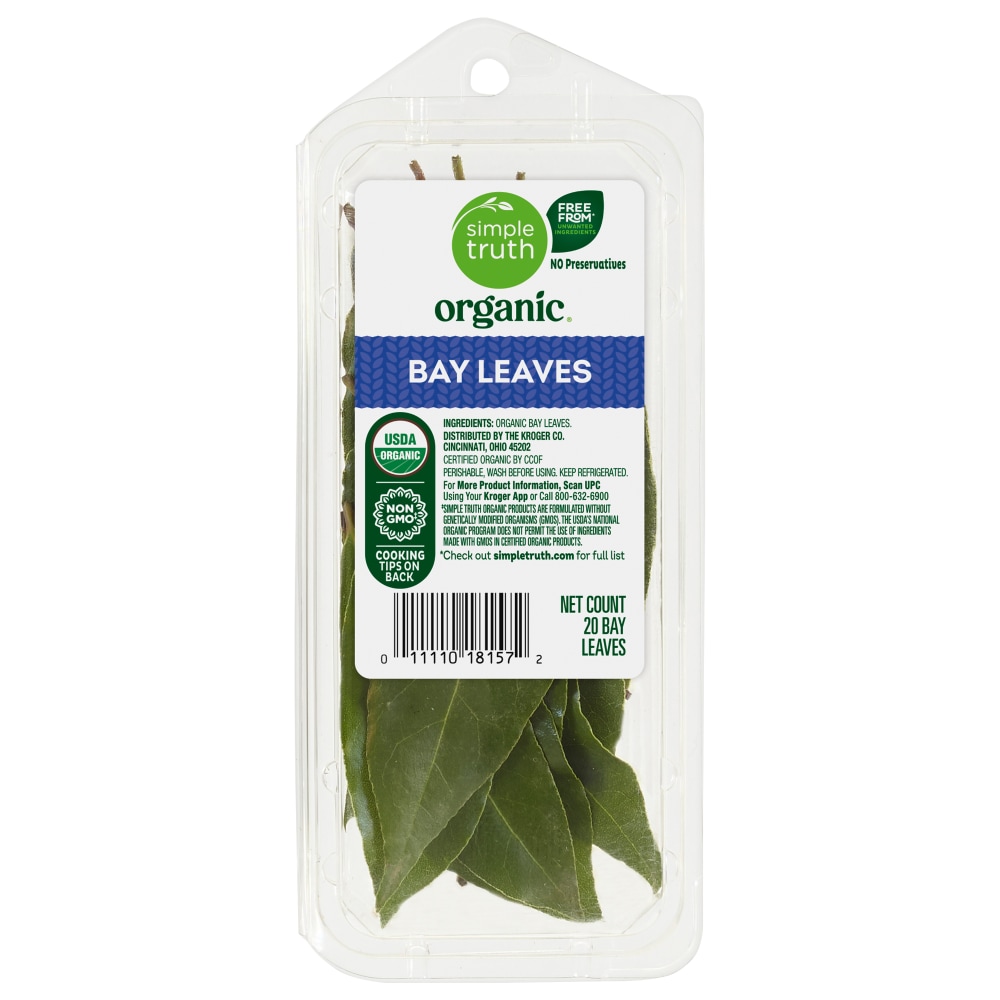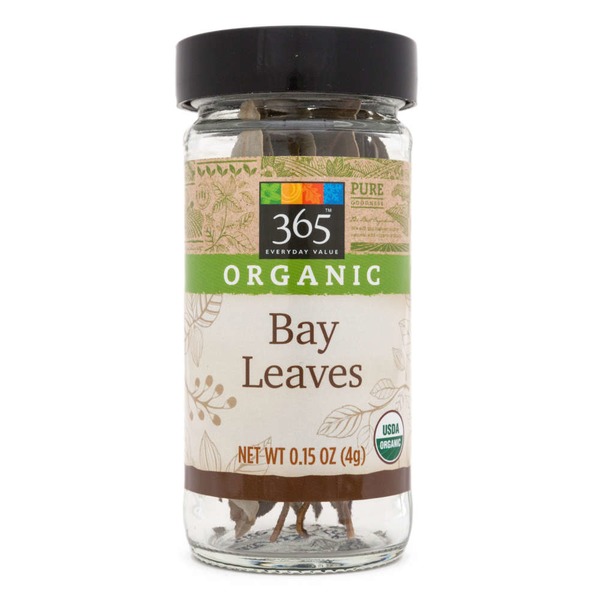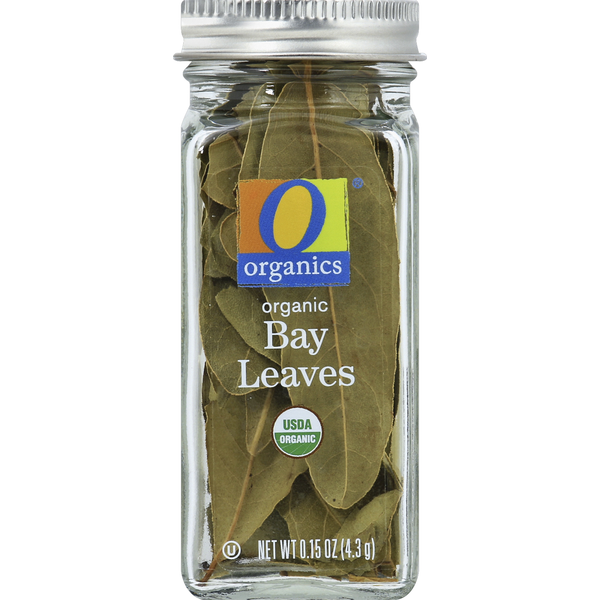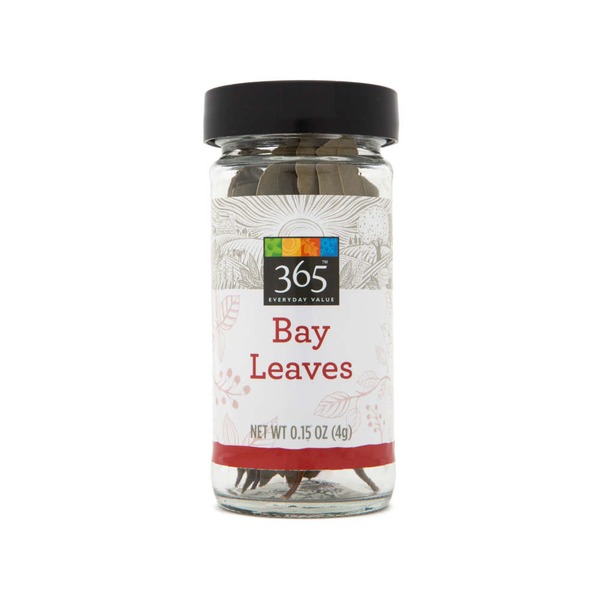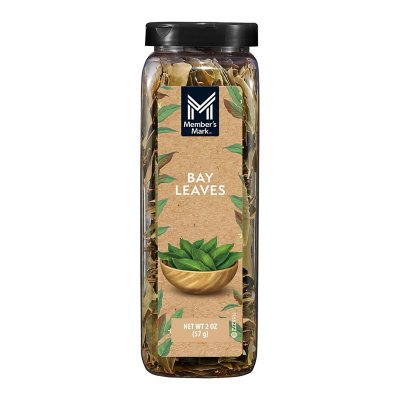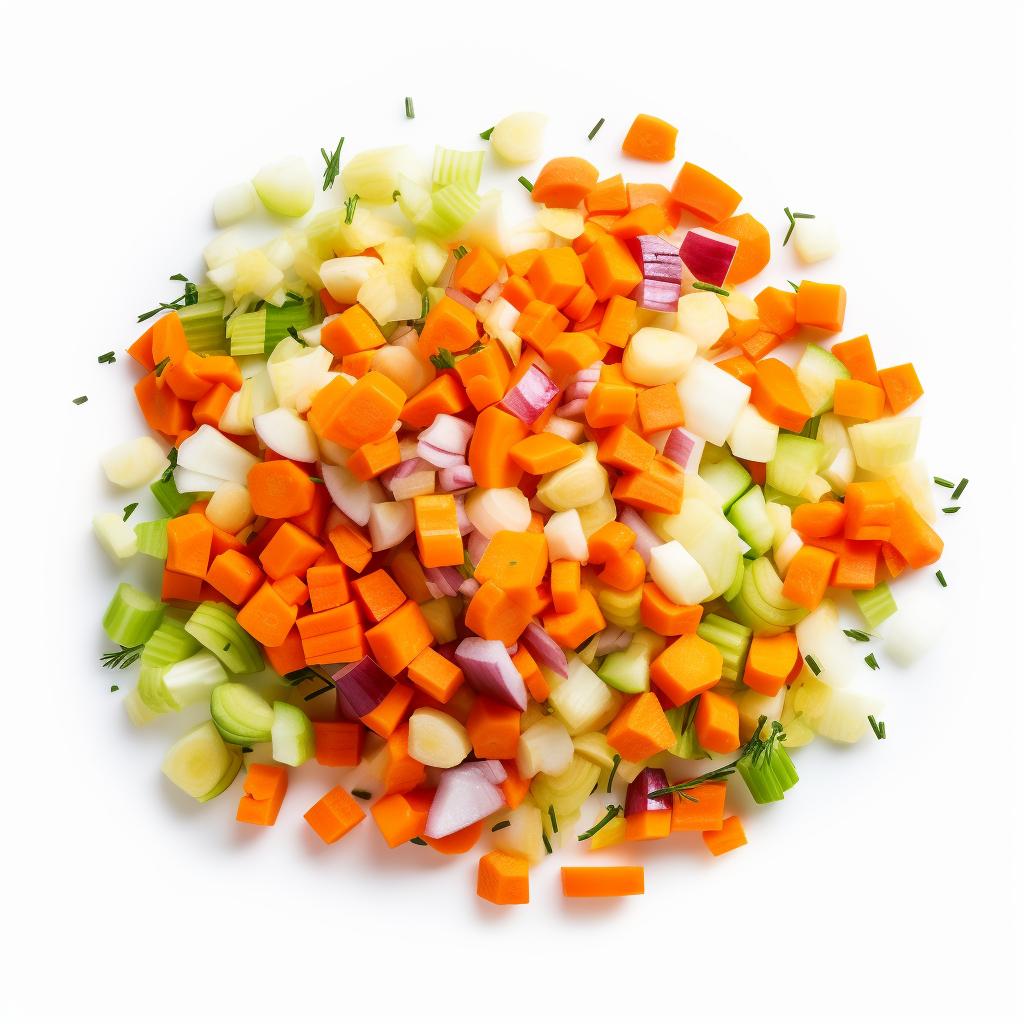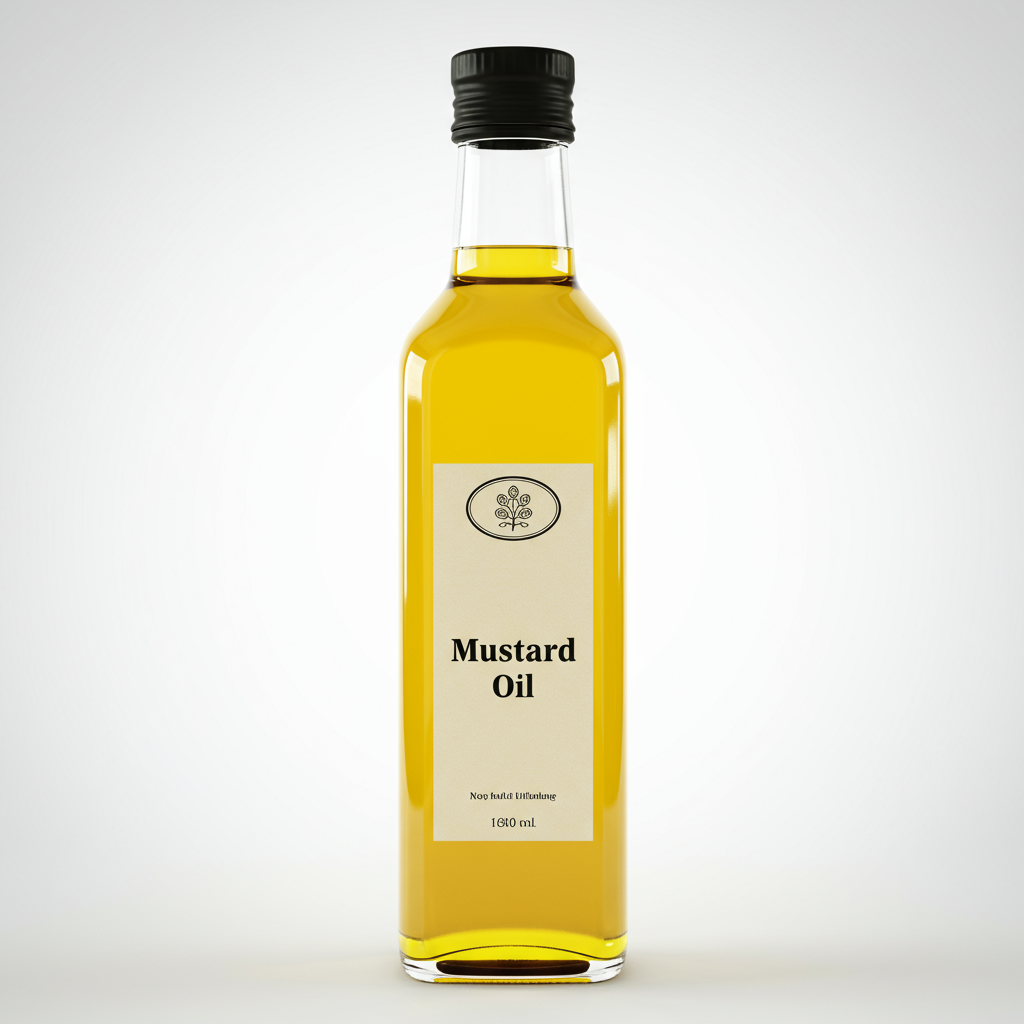SOUPS
CONDIMENTS AND SAUCES
Fresh Bay Leaves
Fresh bay leaves, derived from the evergreen bay laurel tree (Laurus nobilis), are a versatile culinary ingredient cherished by home cooks and professional chefs alike. The aromatic leaves are known for their distinct, slightly bitter flavor and are often used to enhance the taste of various dishes, such as soups, stews, and sauces.
When using fresh bay leaves, it is important to note that their flavor is much milder than that of dried bay leaves, so home cooks may need to adjust the quantities accordingly. To maintain their freshness, bay leaves should be stored in a cool, dry place, and they can last up to several weeks.
82%
CARBS
9%
FAT
8%
PROTEIN
239 Fresh Bay Leaves Products
Wegmans Organic Bay Leaves
Organic Bay Leaves
Fresh Bay Leaves
Simple Truth Organic® Whole Bay Leaves
Publix Bay Leaves, Whole
365 by Whole Foods Market, Bay Leaves Organic, 0.15 Ounce
O Organics, Organic Bay Leaves
Sprouts Organic Bay Leaf Whole Spice
365 by Whole Foods Market, Bay Leaves, 0.15 Ounce
Member's Mark Whole Bay Leaves
Used In 6 Recipes
Fresh Bay Leaves Are Frequently Used With
Fresh Bay Leaves FAQ
Fresh bay leaves are a go-to ingredient for adding depth and aromatic intensity to a variety of dishes. Often used in soups, stews, and sauces, these leaves, hailing from the bay laurel tree, emanate a unique, mild bitterness that often confounds cooks. Some common mistakes people make include using bay leaves in the wrong ratios or not removing them after cooking - they can become a choking hazard and are usually not eaten directly due to their tough and somewhat sharp structure. To get the most out of bay leaves, they should be added early on in the cooking process, allowing ample time for their flavor compounds to infuse into the dish. For a stronger flavor, fresh bay leaves can be torn or crushed before adding them to the dish.
Little known tips about fresh bay leaves include their utility beyond cooking. They can be used as pest repellents, placed in grain containers to keep insects at bay, and steeped in hot water to create a soothing tea that is believed to aid digestion and reduce inflammation.
Can you use fresh bay leaves for tea?
Do bay leaves really make a difference in flavor?
How many fresh bay leaves should I use in comparison to dried ones?
Do you eat bay leaves after they're cooked?
Can fresh bay leaves be eaten raw?
Can I substitute fresh bay leaves for dried ones and vice versa?
Why add bay leaves to dishes?
What's the difference between Californian and Turkish bay leaves?
Does tearing fresh bay leaves release more flavor?
Is it a must to remove bay leaves after cooking?
Expiration & Storage Tips
When does fresh bay leaves expire?
Fresh bay leaves have a general shelf life of about 1-2 weeks in the refrigerator. After this time, they start losing their aromatic flavor. If properly stored in a freezer, they can last up to 6 months. However, always check for signs of spoilage before use.
How do you tell if fresh bay leaves is bad?
To tell if your fresh bay leaves have gone bad, you should look for discoloration, wilting and an unpleasant odor. Fresh bay leaves should be green and aromatic. If they have turned dark or have lost their aroma, it's best to discard them.
Tips for storing fresh bay leaves to extend shelf life
• Always store fresh bay leaves in a cool and dry place, preferably the refrigerator in a sealed plastic bag.
• For prolonged usage, you can freeze the bay leaves. Before freezing, wash and thoroughly dry the leaves. Place them in a sealed plastic bag or airtight container before sticking them in the freezer.
• If you're using a lot of bay leaves, you can dry them up yourself to extend their shelf life. Simply spread the leaves on a cookie sheet and bake them in the oven at the lowest temperature setting until they crumble at the touch.
EXPIRES WITHIN
8 - 21
DAYS
Substitutes

Dried Bay Leaves

Fresh Basil

Fresh Oregano

Fresh Parsley

Fresh Rosemary

Fresh Sage

Fresh Thyme

Rubbed Sage

Italian Herbs Paste

Basil Paste
See All
Health Info
Macros
0g
CARBS
0g
FAT
0g
PROTEIN
Allowed on these diets
LOW FAT
HIGH CALCIUM
VEGETARIAN
KETO
PALEO
WHOLE 30
MEDITERRANEAN
LOW CARB
VEGAN
LACTOSE FREE
GLUTEN FREE



